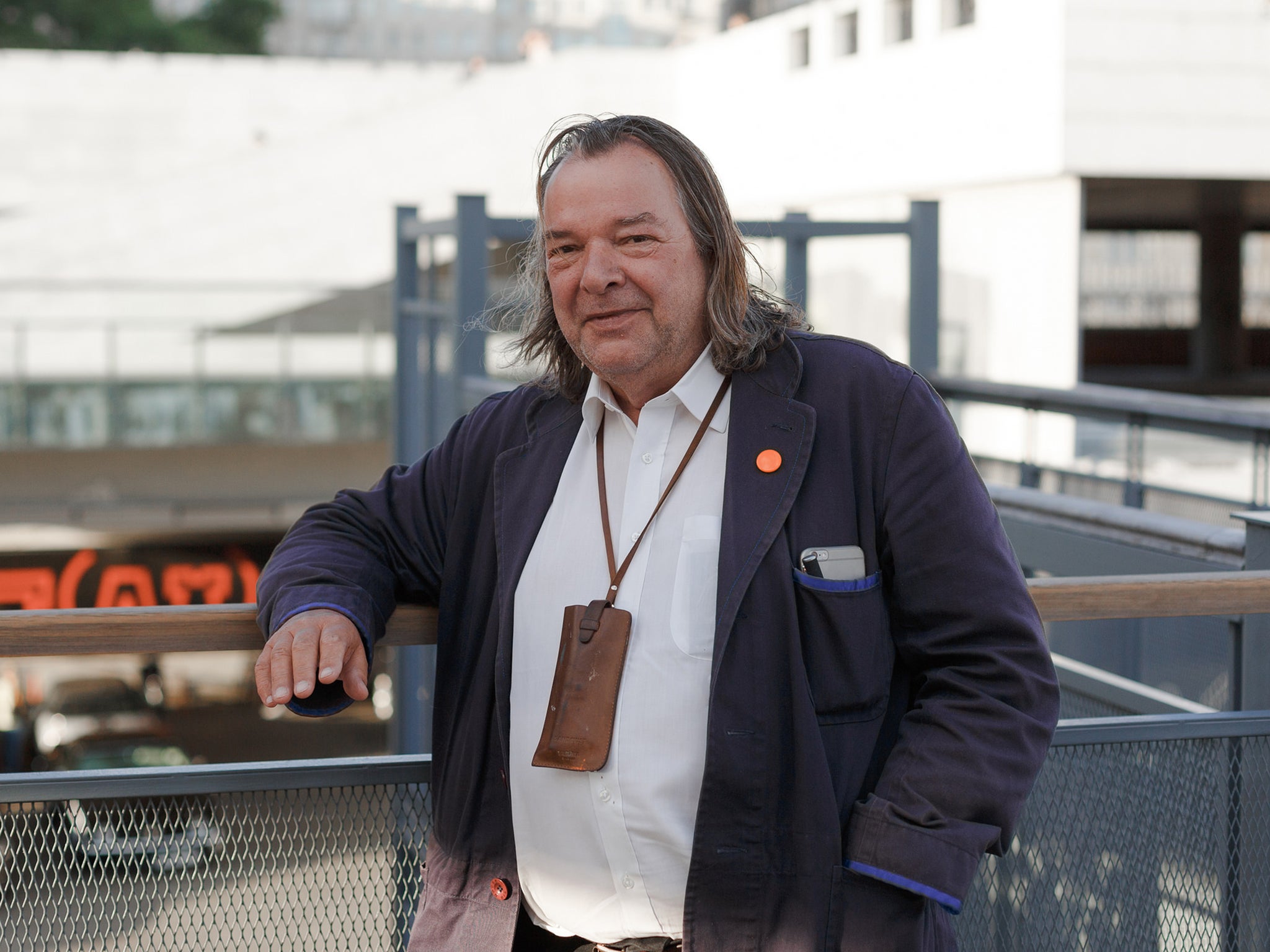Will Alsop remembered: The architect who brought future flair to public buildings
Northampton-born Alsop designed the eye-poping Peckham Library, Cardiff Bay Visitor Centre and the Blizzard Institute

Will Alsop, who has died aged 70, was the architect who dared to be different. Employing bold forms and bright colours, he created distinctive architectural designs, buildings which stood out from the grey concrete blocks around them. “Architects are the only profession that actually deal in joy and delight – all the others deal in doom and gloom,” Alsop once said.
At Peckham Library, Alsop’s futuristic building design took form around an upended “L” shape, with its upper part supported on steel stilts, spaced seemingly at random. The outside, covered in pre-patinated copper, glows a vivid pale blue. Opened in 2000, the project won him the coveted Stirling Prize that year and has been credited with enticing even reluctant readers to the library.
In his Hamburg Ferry Terminal, completed in 1993, massive office modules sit atop precast A-shaped columns, that reference the profile of the port’s cranes. Although the materials are simple – concrete, steel and glass – the result is an elegant and functional landmark.
Alsop was born in 1947, the son of Brenda and Francis Alsop, an accountant. Architecture came to him very young, in designing a house for his mother when aged only six. He joined the foundation course at Northampton Art School, where he was influenced by Henry Bird, his drawing tutor. Alsop recalled:
"He gave me a brick, told me to draw it and promptly left the room. I proceeded to draw it with all its shadows. On his return he went into a rage and chastised me for destroying the vision with shading, shouting: 'What is wrong with a simple line?' He insisted that I redo the drawing with line only so that I could begin to see the brick and its proportions. I drew that brick for two three-hour sessions per week, line only, for three months. Eventually, he admitted that I had mastered the brick and I was allowed to progress on to the tin can.”
He was admitted to the Architectural Association School of Architecture, graduating in 1973. While still studying, he had entered the competition to design the Pompidou Centre in Paris, only to come in second to the team of Richard Rogers and Renzo Piano, who pitched the winning, now iconic, proposal.
After several years working for others, he founded Alsop & Lyall, partnering with friend and former classmate John Lyall. Their first project was modest, a design for a swimming pool at Sheringham in Norfolk. However, their Cardiff Bay Visitor Centre, nicknamed “The Tube”, brought their firm to prominence through its audacity and simplicity of its form. Taking the shape of a disposible cigarette lighter, and constructed from plastic-coated fabric over steel ribs, it was shortlisted for RIBA's Building of the Year Award. Only intended to last five years, it has unfortunately since been dismantled.
In 1995 he was appointed professor of Architecture at the technical university of Vienna and later took a similar role at the University for the Creative Arts's Canterbury School of Architecture. He was elected to the Royal Academy in 2000 and made an Officer of the Order of the British Empire (OBE) the same year.
In his book Supercity (2004) Alsop articulated a vision of a futuristic conurbation of space-age buildings, extending from Liverpool to Hull. But his Supercity utopia was not for everyone. A planned glass cloud on stilts, dubbed by Alsop the “Fourth Grace”, or more irreverently by others the “Cow Pat”, was cancelled by Liverpool City Council in 2004. For a few years his fortunes wavered in the balance and by 2006 he had sold to SMC Group. He commented at the time: “Of all the countries in the world, the UK is the most risk-averse group of people there is. In North America we are doing very well and in the far east we are doing well. I want to work in the UK, it's my home.”
Outside of the world of architecture, he continued to paint, celebrating the freedom that it gave him. “One of the reasons for painting is that you are not really in control of what you are doing,” he noted. In 2009 he even announced that he would retire from architecture in favour of painting. Yet he soon returned to establish a new firm, aLL, in 2011, based in Hackney. Alsop had also opened an office in Chongqing, China, and envisaged an innovative cultural quarter developing in the surrounding area.
Marcos Rosello, co-founder at aLL, said: “Will has inspired generations and impacted many lives through his work. It is a comfort to know that due to the nature of Will's work and character, he will continue to inspire and bring great joy... His design ethos, essentially to ''make life better'', is evident in the architecture of his buildings and their surrounding communities.”
William Alsop, architect: born 12 December 1947; died 12 May 2018.
Subscribe to Independent Premium to bookmark this article
Want to bookmark your favourite articles and stories to read or reference later? Start your Independent Premium subscription today.

Join our commenting forum
Join thought-provoking conversations, follow other Independent readers and see their replies